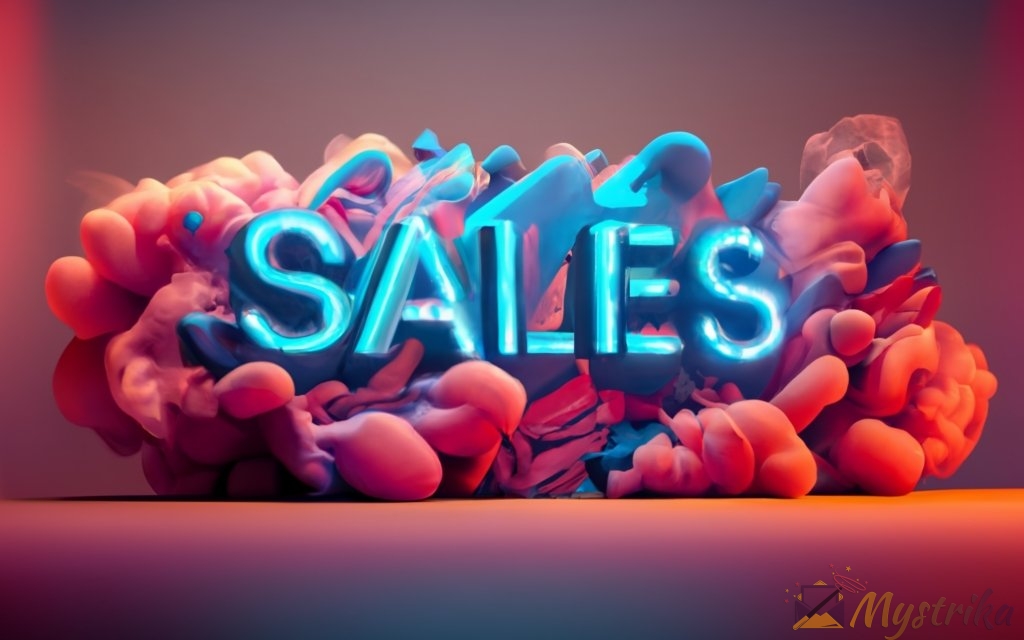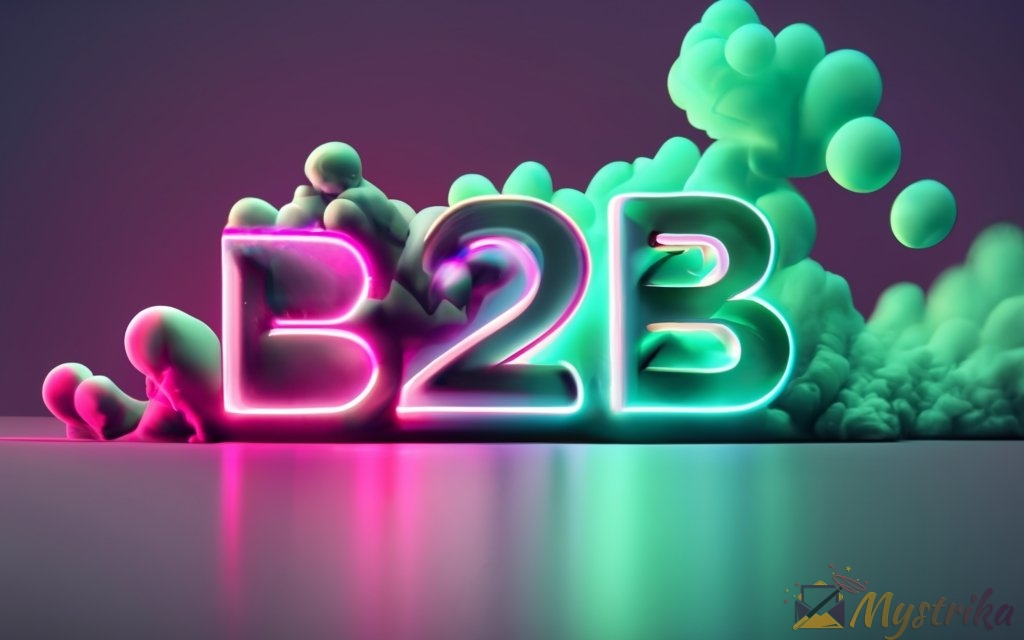What’s the key to reeling in more prospects to become customers? Call-to-action (CTA) examples tailored expertly to your audience and goals. Discover the art and science behind crafting CTAs that captivate audiences and compel action. This guide breaks down winning CTA strategies across channels through examples, data and tips from the masters.
Whether it’s building email lists, driving demos, or prompting purchases, we’ll explore how to create CTAs that hook prospects and guide them persuasively into your funnel. Read on to learn the methods, designs, copywriting, placement principles and optimization techniques that set great B2B CTAs apart. Master these to create CTAs that captivate your prospects and lead them through your sales pipeline to become customers.
The Ultimate Guide to Creating High-Converting B2B Call-to-Action Examples
What are Call-to-Action Examples and Why are they Important for B2B Marketing?
Call-to-action (CTA) examples refer to the tactical elements used in marketing campaigns, content, and ads to prompt a desired action from the audience. They serve a crucial purpose in B2B marketing by guiding prospects through the buyer’s journey to become customers.
Defining Call-to-Action (CTA) Examples
CTAs come in many forms, like buttons, text links, images, or any element that encourages visitors to take a specific action. For example:
- Clickable button that says “Download eBooks”
- Hyperlinked text saying “Request a Free Demo”
- Pop-up offering a coupon code when visitors try to exit the page
Essentially, CTAs act as the bridge between your business and the prospect. They transition readers from passive information consumption to actively engaging with your brand.
Without clear CTAs, prospects may not understand what you want them to do next or how your offerings can benefit them. Well-designed CTAs eliminate this confusion and compel visitors to convert.
Understanding the Role of CTAs in the B2B Buyer’s Journey
Since B2B buyers go through longer decision-making cycles, strategic CTAs are needed at each funnel stage to guide them along. Different CTAs will match the visitor’s intent as they progress toward a purchase.
For example:
Top of Funnel CTAs:
- “Download our guide”
- “Join our newsletter”
- “Watch the product overview video”
These introduce prospects to your brand and capture contact information early on.
Middle of Funnel CTAs:
- “Request a custom quote”
- “See a demo”
- “Contact sales”
When prospects show intent and engage further, these CTAs get them interacting with sales teams.
Bottom of Funnel CTAs:
- “Start a free trial”
- “Buy now”
- “Schedule a call”
Finally, these CTAs convert engaged leads into paying customers.
Without strategic CTAs guiding them through each stage, prospects may feel lost and exit the journey prematurely. Thoughtful CTAs provide clear direction.
How CTAs Help Drive Leads and Sales for B2B Companies
Ultimately, CTAs are key conversion tools for B2B marketers. A HubSpot study found that including a clickable CTA button instead of just text can increase conversions by as much as 45%.
Well-crafted CTAs accomplish several goals:
- Capture contacts: CTAs like “Get your free gift” or “Join our newsletter” help grow your email list early in the funnel.
- Move prospects along: CTAs such as “See a demo” progress engaged visitors closer to a sale.
- Reduce friction: CTAs like chatbots onsite immediately connect prospects with helpful info.
- Build urgency: CTAs with time limits, like “Limited time offer,” create FOMO.
- Boost brand clarity: CTAs clarify what you want prospects to do, like “Contact sales.”
- Stand out: Compelling CTAs differentiate your content from competitors.
With each CTA, you guide the prospect one step further. And optimizing CTAs through testing can dramatically improve conversions. For example, one SaaS company saw an 80% increase in landing page conversions by refining their CTA.
In summary, strategic CTAs that match the audience’s intent are crucial for moving B2B prospects smoothly through the sales pipeline. Without them, brands miss out on potential conversions. But compelling, well-placed CTAs boost leads and sales by prompting visitors to take action.

15 Powerful B2B Call-to-Action Examples and Tips
Crafting compelling CTAs is both an art and a science. While there are best practices to follow, choosing the right phrasing and placement takes testing and optimization.
Let’s explore examples of high-performing B2B CTAs across key channels, as well as tips to improve your own.
1. Call-to-Action Examples for Email Marketing
Email is a workhorse channel for B2B lead gen. To get prospects to open, click, and convert, CTAs must be clear and actionable.
Subscribe CTAs
CTAs prompting newsletter signups help grow your list. Examples:
- “Subscribe to our blog”
- “Join our mailing list”
- “Get our weekly digest”
Tips:
- Offer a content upgrade for subscribing like an eBook or toolkit
- Use a sense of exclusivity – “Join our inner circle”
- Add social proof – “Join 500+ subscribers
Download Offer CTAs
Downloads in exchange for emails work well. Examples:
- “Get the exclusive report”
- “Download our 2023 Industry Outlook guide”
- “Grab the pricing sheet”
Tips:
- Include specifics on the content piece, like page count or topics covered
- Add urgency with “Instant download” or “Limited time access”
- Use a gift mechanism like “Claim your free copy”
Request a Demo CTAs
CTAs to schedule demos convert warm leads. Examples:
- “See the platform in action”
- “Book a personalized walkthrough”
- “Schedule a free demo today”
Tips:
- Reduce friction by linking directly to the calendar
- Offer exclusive demo-only perks like extended trials
- Remind of limited spots with “Reserve your demo now”
2. Call-to-Action Examples for Landing Pages
Landing pages often represent the final conversion step for prospects. Clear CTAs remove any ambiguity.
Request a Quote CTAs
Quoting helps progress leads down funnel. Examples:
- “Get a custom quote”
- “Request a quote now”
- “Calculate your price”
Tips:
- Allow prospects to specify needs for more accurate quotes
- Set expectations on turnaround time for quotes to be delivered
- Offer a discount or freebies with quote requests
Contact Us CTAs
“Contact us” CTAs make it easy for interested prospects to reach out. Examples:
- “Get in touch”
- “Contact sales”
- “Speak with an expert”
Tips:
- Link directly to booking calendars or contact forms
- Specify team or person they will be contacting
- Remind of quick response time – “We usually respond within 24 hours”
- Sign Up CTAs
CTAs for signing up or registering capture lead info. Examples:
- “Create your free account”
- “Sign up for a trial”
- “Join today”
Tips:
- Emphasize ease – “Takes just 2 minutes to sign up”
- Add exclusivity like “Get VIP access”
- Highlight perks, like “Enjoy 30 days free”
3. Call-to-Action Examples for Blog Posts and Content Offers
CTAs in blog posts or content offers guide readers to take action.
Click Here CTAs
“Click here” links lead readers where you want them to go. Examples:
- “Click here for 10 tips to improve productivity”
- “Click here to see the #1 solution”
- “Click here to get started”
Tips:
- Use descriptive link texts, not just “click here”
- Place CTAs in middle and end of posts
- Link to related content or offers
Download This Guide CTAs
CTAs can promote free downloadable content. Examples:
- “Download the 2022 small business tax guide”
- “Get the employee retention toolkit”
- “Download our full case study here”
Tips:
- Include specifics like the format, pages, or topics covered
- Set expectations on what info is required to access the download
- Use urgency with “Instant download”
- Watch This Webinar CTAs
CTAs can drive registrations for webinars or events. Examples:
- “Reserve your spot for the 2023 trends webinar”
- “Watch the product demo recording now”
- “See the case study presentation”
Tips:
- List key details like speakers, dates, times upfront
- Offer exclusives for signing up like discounts or bonuses
- Limit spots to create urgency
4. Call-to-Action Examples for Social Media
CTAs help social posts convert visitors into followers or leads.
Comment CTAs
“Comment” CTAs drive engagement on posts. Examples:
- Comment below with your top 2023 business goal
- “Comment if you want us to dive deeper into this topic next”
- “Want to share your story? Comment below”
Tips:
- Ask for comments on provocative or emotional topics
- Pose questions to specifically prompt comments
- Reply to early comments to keep the conversation going
Click This Link CTAs
These CTAs direct followers to content or offers. Examples:
- “Getting started guide: [Link here]”
- “Checkout this case study: [Link here]”
- “See our new templates: [Link]”
Tips:
- Choose descriptive anchor text for your links
- Use redirects to track clicks
- Rotate link posts with other content
Join Our Community CTAs
Building community drives social growth. CTAs such as:
- “Join our Facebook Group [link]”
- “Follow us on Instagram for updates”
- “Subscribe on YouTube for weekly videos”
Tips:
- Promote channels strategically, like Instagram on image posts
- Cross-post CTAs across channels
- Offer exclusives for following, like giveaways
5. Call-to-Action Examples for Paid Ads
CTAs help paid ads convert visitors into leads. Compelling CTAs with clear direction work best.
Apply Now CTAs
“Apply” works for ads promoting openings. Examples:
- Apply for the Account Executive role
- “Submit your application today”
- “Join our team, apply here”
Tips:
- List specifics like location, title, responsibilities
- Set expectations on the application process
- Showcase company culture or values
Shop This Look CTAs
Helpful for ecommerce product ads. Examples:
- “Buy this handbag now”
- “Shop this sweater for winter”
- “Get this dress, just launched!”
Tips:
- List product attributes like price, size, or materials
- Create urgency with limited inventory or sales
- Use aspirational messaging around trends or styles
Get Your Free Audit CTAs
Offering free audits helps entice service-based ads. Examples:
- “Get a complimentary website audit”
- “Sign up for your free marketing consultation”
- “Claim your custom SEO analysis”
Tips:
- Share what visitors will gain or learn from the audit
- Emphasize no-risk or commitment for signing up
- Outline next steps so prospects know what to expect
In summary, well-crafted CTAs are crucial for converting readers and driving the desired actions across channels. Continually test and optimize your CTAs for maximum impact.

How to Optimize B2B CTAs for High Performance
Crafting a high-converting CTA takes work. You must choose the optimal type, wording, design, and placement for your audience and goals. By continually testing and optimizing based on data, you can pinpoint what resonates best.
Here are tips for boosting the performance of your B2B CTAs:
Choosing the Right CTA Type Based on Intent and Funnel Stage
Every prospect is at a different stage of the buyer’s journey. Matching the CTA type to their intent ensures relevancy.
For example:
- Cold prospects: Link to educational top-of-funnel content like blogs, guides, or webinars to nurture them.
- Warm prospects: Offer free trials, demos, or audits to let them actively engage with your product.
- Nearing a purchase: Provide CTAs to contact sales, schedule a call, or request a custom quote to progress the deal.
You can also match CTAs to the funnel stage:
- Top of funnel CTAs: Focus on offers, resources, or community-building.
- Middle of funnel CTAs: Prompt more direct engagement like demonstrations, consultations or personalized quotes.
- Bottom of funnel CTAs: Remove friction from the path to purchase with CTAs to buy, schedule, sign up, or pay.
Choose the CTA type based on factors like prospect intent, funnel stage, and your goals at that moment. This ensures you guide them smoothly forward.
Writing Clear, Action-Oriented Copy That Speaks to the Audience
The CTA copy itself matters greatly in conveying what you want visitors to do. Follow best practices:
- Use familiar language: Avoid confusing jargon. Say “Request a demo” rather than “Schedule a personalized walkthrough.”
- Be ultra-specific: Tell them exactly what asset they’ll get, which topic it covers, the format, etc.
- Focus on their needs: Highlight how taking the action will benefit them.
- Incorporate urgency (when appropriate): Limited-time offers or scarcity build urgency.
- Keep it brief: Get right to the point. “Download the guide” is better than “If you’re interested to learn more, you can download our guide here.”
- Use active voice and strong verbs: “Request a quote now” is more impactful than “You can get a quote here.”
Optimizing your copy makes your CTAs more persuasive and actionable for prospects.
Using Contrasting Colors That Make CTAs Stand Out
An eye-catching CTA grabs attention, while a color matching your branding builds familiarity. Find the right balance.
Follow this checklist:
- Use colors that pop against your site’s environment. Red or green often stands out.
- Make sure the CTA color contrasts well with background colors. Black on yellow works better than navy on black.
- Avoid clashing with colors used in other important elements like logos.
- Consider lighter colors for CTAs placed against dark backgrounds and vice versa.
- Replicate your brand colors to some degree to capitalize on familiarity.
Colors that make your CTAs easy to notice, paired with brand consistency, draw clicks. Test different combos.
Personalizing CTAs to Make Prospects Feel Seen and Valued
Personalized CTAs demonstrate that you “get” each visitor. Dynamic CTAs change based on factors like:
- Location: “Get 20% off in the NYC area this week”
- Company: “See a demo tailored to Acme Co.”
- Name: “Download the guide, Sara”
- Visited Pages/Content: “Continue reading on [that topic]”
- Journey Stage: “You’re almost done!”
Even small personalization makes CTAs feel more relevant. But use personal data ethically, transparently, and with consent.
Testing Different CTAs to Determine What Converts Best
With an abundance of variables like wording, design, placement, etc., testing is key to optimization.
Ways to test:
- A/B testing: Try 2+ versions of an element like copy or color.
- Multivariate testing: Test multiple elements on one CTA, like color, size, and placement.
- Focus groups: Get prospect feedback on CTAs.
- Heatmaps: See where people click with eye-tracking tools.
- Surveys: Ask prospects their perceptions or preferences.
- Analytics: Review click-through-rates on CTAs.
Iteratively test CTAs across your site and campaigns. Over time, determine what resonates most with your audience to boost conversions. Even slight tweaks can result in major lifts.
Example: 34% Increase from Multivariate CTA Testing
One B2B company tested CTAs on their homepage using multivariate testing. They changed 3 elements on their main CTA:
- Text: “Request Demo” vs. “See Demo Video”
- Color: Blue vs. green
- Placement: Top center banner vs. right sidebar
The winning combo was “See Demo Video” in green placed in the top center banner. This CTA increased demo sign-ups by 34% over the original.
Always be testing!
In summary, treat your CTAs as living elements. Continually experiment with and refine them based on prospect behavior insights to maximize your conversions.

Examples of Top-Performing B2B Call-to-Action Best Practices
The most effective B2B CTAs creatively combine smart design, strategic placement, and persuasive copy. Let’s explore some stellar examples of CTAs employing proven best practices.
Email Subscribe CTA
This example from The Budget nista uses scarcity and humor to compel newsletter signups:
It stands out with the orange color contrasting the grey background. The “Sign up for Weekly Goodies!” copy intrigues readers much more than a generic “Subscribe to our newsletter.” And the fun gift box icon enhances the CTA creatively.
Slide-In CTA
HubSpot incorporates this slide-in CTA seamlessly into a blog post:
It offers readers a free, useful asset related to the post topic. The positioning mid-article catches readers who might otherwise exit. And the subtle animation catches attention without being disruptive.
Pop-Up CTA
Blogging.org uses a sense of urgency and scarcity in this exit-intent pop-up CTA:
The eye-catching animation and special offer create FOMO. The ticking timer adds pressure. And prominently displaying “limited time offer” makes readers feel they must act fast.
Landing Page CTA
This General Assembly CTA attracts attention with contrasting bright colors
The “Subscribe” copy clearly conveys what they want visitors to do. Its slide-in placement makes it noticeable against a muted background. And the vibrant, non-brand colors make it pop out.
Paid Ad CTA
Lyft’s ad targets people looking to earn money driving with this direct CTA:
It uses the prospect’s pain point in the copy: “Make money driving your car.” The CTA button text, “Apply Now,” makes the path forward crystal clear. And the photo visualizes the monetary benefit.
Social Media CTA
Headspace’s Instagram CTA aligns beautifully with their brand:
The playful “Snuggle up to Headspace” copy fits their vibe. The soft colors and imagery enhance it. And the subsequent “Subscribe” CTA button progresses users logically to the sign-up.
These examples demonstrate how impactful CTAs artfully blend positioning, design, copy, and psychology. Test new ways to engage your audience.

Key Takeaways and Next Steps for Creating Winning B2B CTAs
Let’s recap the core lessons around optimizing your B2B CTAs for higher conversions:
Main Points Summary
- CTAs bridge the gap between prospects and your business by prompting action. Without clear CTAs, visitors may feel confused about what you want them to do.
- Match CTAs to the prospect’s intent and position within the sales funnel. Top-of-funnel CTAs should focus on education and offers, while bottom-funnel CTAs should ease the path to purchase.
- Write CTAs that speak directly to the pain points and interests of your audience. Use clear, benefit-driven copy and avoid generic phrases that add no value.
- Make CTAs noticeable through design choices like contrasts with the surrounding environment and strategic placement in high-visibility areas.
- Personalized CTAs based on visitor attributes like location or company make prospects feel valued. Dynamic CTAs boost relevancy.
- Continually test variations of copy, design, placement, and other elements through A/B and multivariate testing. Optimization through data is key for the highest-converting CTAs.
- Study examples of top-performing CTAs that creatively blend copy, visuals, and psychology to engage audiences. Draw inspiration from others while crafting your own brand-appropriate CTAs.
In summary, highly optimized CTAs tailored to your prospects provide the needed prompts for visitors to move down the marketing funnel and convert.
Recommended Next Steps
Now it’s time to improve your own CTAs. Here are some recommended next actions:
- Audit your current CTAs across channels and content. Identify any that are underperforming or could be improved.
- Brainstorm new CTAs tailored to different prospect groups and funnel stages. Map these to points along the buyer’s journey.
- Draft copy for your revised CTAs focused on benefits and written clearly for your audience in their language.
- Design or freshen up the visuals for your new CTAs using contrasts, strategic placement, and brand consistency.
- Use CTAs templates or tools to set up testing for your current CTAs against the optimized versions.
- Analyze the data to see which CTAs increase desired actions like clicks, lead captures, downloads, purchases, etc.
- Roll out the most effective CTAs more widely. But keep optimizing and testing to continually improve performance.
With strategic CTAs matched to your prospects and goals, you can guide B2B buyers along each step of their journey, prompting them to engage and convert at higher rates. Use the lessons learned here as a blueprint for boosting your CTA success.

Summary
Optimizing your B2B CTAs is crucial for guiding prospects to convert across channels. Key lessons include:
- CTAs serve a vital role in moving prospects through the sales funnel by prompting action at each stage. Without clear CTAs, brands miss conversion opportunities.
- Match the type of CTA to the audience’s intent and position within the buyer’s journey. Top-of-funnel CTAs should focus on education and offers while bottom-funnel CTAs should ease the path to purchase.
- Write CTAs using active language focused on audience benefits. Avoid generic phrases that add no value. Keep copy clear, concise, and relevant.
- Make CTAs visually stand out through design choices like color contrasts, strategic placement in high visibility areas, and leveraging negative space.
- Personalized, dynamic CTAs boost relevance by changing based on visitor attributes like company, location, or pages visited.
- Continually test CTAs using A/B testing, multivariate testing, heatmaps, and other methods. Let data guide you to higher-converting CTAs.
- Study examples of top-performing CTAs that creatively blend copy, visuals, and psychology to engage audiences while driving action.
- Refine CTAs across channels like landing pages, emails, ads, and social media. Optimization is key for prompting visitors to progress through the funnel.
With strategic, optimized CTAs tailored to your goals and audience, you can smooth the path to purchase and boost conversions. Use the tips covered here as your blueprint for CTA success.
Frequently Asked Questions
What are some best practices for B2B CTAs?
Some key best practices include:
- Match the CTA type and design to the prospect’s intent and position in the sales funnel.
- Use clear, benefit-driven copy focused on the audience, not generic phrases.
- Make CTAs visually stand out through color contrast, strategic placement, negative space, etc.
- Personalize CTAs dynamically when possible to increase relevance.
- Continually test CTAs to determine what resonates most with your audience.
How many CTAs should be on a page?
Too many CTAs can be distracting. Aim for 1-3 persuasive, strategic CTAs per page. Make one the clear priority if driving a specific action.
How do you create a sense of urgency with CTAs?
Ways to build urgency include scarcity tactics (“limited spots”), discounts (“20% off this week only”), timing (“sale ends in 2 days”) and social proof (“500+ prospects joined”). But avoid false urgency that harms trust. Should CTAs always be clickable buttons?
Not necessarily. CTAs can be hyperlinked text, clickable images, embedded forms, overlays and more. Buttons often convert well but test other formats too. Just make the desired action clear.
Where should you place CTAs on landing pages?
Page placement impacts visibility. Try CTAs above the fold, in sidebars, site headers, page footers, in content body, as pop-ups or slide-ins. See what draws most clicks through testing.
How do you write persuasive CTA copy?
Use familiar language, focus on audience benefits, be ultra-specific, incorporate urgency when appropriate, keep it concise, and use active voice and strong verbs. Speak directly to your prospects’ needs.
How can you tell if your CTAs are effective?
Analytics like click-through-rates provide data. A/B testing different versions will show what converts best. Ultimately, look at the impact on desired goals like lead captures, sales or downloads. Refine based on performance.

